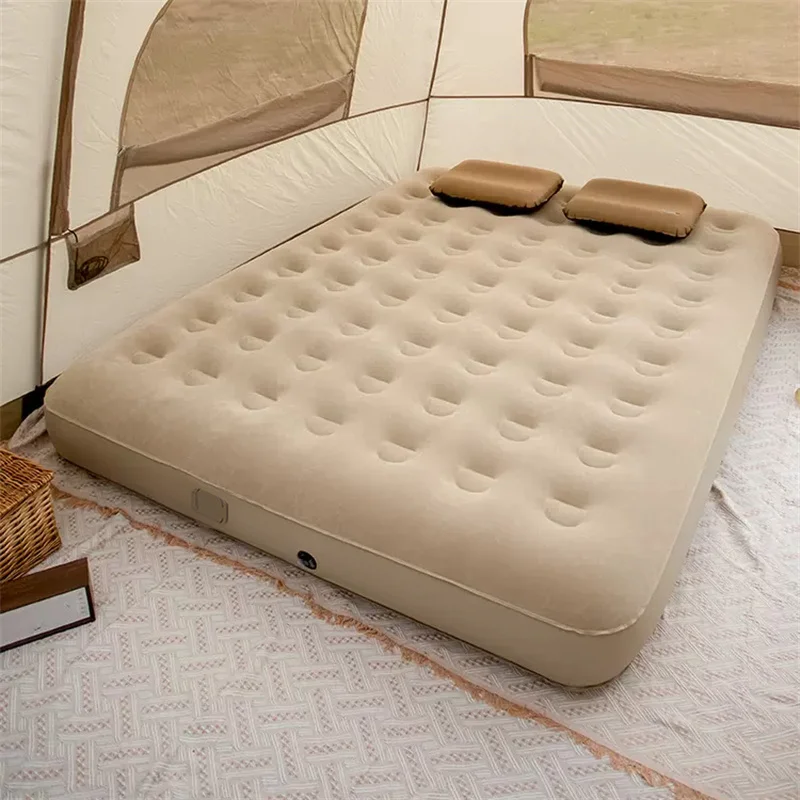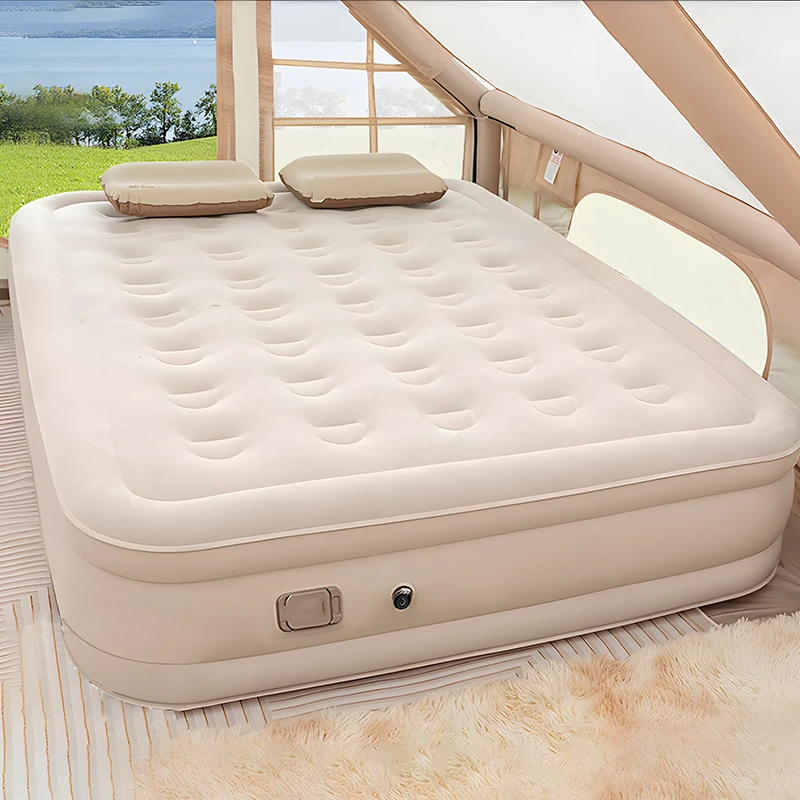Air mattresses have carved a niche for themselves in the world of sleep solutions. They offer portability, convenience, and a surprisingly comfortable experience for many users. However, one common complaint surrounds the presence of bumps on these mattresses. In this article, we will debunk some myths related to air mattresses, explore the reasons behind the bumps, provide maintenance tips, and offer guidance on how to optimize your air mattress experience.
Understanding Air Mattresses: A Brief Overview
Air mattresses consist of a durable shell made from materials like PVC or rubber, inflated with air to create a cushioned sleeping surface. They come in various sizes and shapes, designed for diverse purposes ranging from camping to guest accommodations. Unlike traditional mattresses, air mattresses allow users to adjust their firmness level, a feature that many find attractive. However, this flexibility can inadvertently lead to some frustrations, particularly regarding the bumps that often form on the surface.
The bumps on air mattresses are a point of contention for many. Some people express concerns about the mattress’s quality, leading them to distrust the product altogether. Others believe that the bumps are solely a result of poor manufacturing standards. However, these opinions often miss the larger picture. An understanding of how air mattresses function and what creates these bumps can significantly enhance user experience and satisfaction.

Common Myths About Air Mattresses
When it comes to air mattresses, misinformation and myths abound. One of the most prevalent is the notion that air mattresses are inherently inferior to traditional mattresses. This belief stems largely from anecdotal experiences. Sure, a poorly constructed air mattress can lead to bumps and discomfort; however, a high-quality air mattress can offer comparable comfort to a traditional mattress.
Another popular myth claims that air mattresses are only suitable for temporary use. While air mattresses are commonly associated with camping or accommodating guests, advancements in technology and manufacturing have led to a new breed of high-performance air beds designed for everyday use. Many of these mattresses come equipped with sophisticated features such as built-in pumps, adjustable firmness settings, and sleep tracking technology.
Some believe that air mattresses will automatically deflate overnight due to air seepage, leading to discomfort. While it’s true that some air mattresses lose air over time, high-quality models are designed with advanced sealing technology that minimizes this issue. Regular maintenance, such as ensuring the valve is tightly closed and inspecting for leaks, can go a long way in maintaining optimal firmness.
The Science Behind Bumps on Air Mattresses
To understand why air mattresses develop bumps, it’s essential to delve into the mechanics involved. Primarily, the distribution of air within the mattress plays a crucial role. When you first inflate an air mattress, the air may not uniformly fill every compartment or chamber, causing uneven surfaces and resultant bumps.
As you lie on the mattress, your weight can exacerbate these bumps by compressing certain areas, creating indentations while leaving others elevated. This uneven compression can happen due to variations in weight distribution across the surface. The bumpy surface can significantly affect the sleeping experience, leading to pressure points that could cause discomfort.
Another contributing factor is the materials used in manufacturing. Not all air mattresses are created equal; some low-quality versions may have inconsistent material thickness, leading to pumping that feels uneven. High-quality mattresses often employ multi-chamber designs that provide more even air distribution and support.
Finally, temperature fluctuations can also impact the firmness and smoothness of an air mattress. As the air inside expands with heat and contracts with cold, it can cause fluctuations in mattress height and shape, leading to uneven surfaces.

How to Maintain Your Air Mattress
To keep your air mattress in optimal condition and minimize the occurrence of bumps, diligent maintenance is required. Regularly checking for leaks is a crucial first step. Using a patch kit can quickly resolve small punctures, while larger issues may require professional repair or replacement.
Ensure that the mattress is inflated to the recommended firmness. Over-inflation can create excess pressure on specific areas, while under-inflation can leave the surface feeling uneven. Many modern air mattresses feature built-in pumps that allow for easy inflation adjustments, helping you find the perfect balance.
Another important maintenance tip is to keep the mattress clean. Dust, dirt, and oils from the skin can accumulate on the mattress surface, affecting not only comfort but also hygiene. Using a wet cloth with mild soap to wipe down the mattress after prolonged use can prevent any buildup.
Finally, store your air mattress properly when not in use. Avoid folding or bending it to prevent creases, which could lead to structural weakness over time. Instead, deflate it completely and store it in a cool, dry place away from direct sunlight.
Optimal Usage for Comfort
Beyond maintenance, understanding how to use your air mattress optimally can drastically improve your experience. First, set the mattress up on a flat surface. Ideally, place it on an air mattress support frame, platform bed, or even a thick carpet to distribute weight evenly. Uneven surfaces can cause exceptional wear and create bumps.
Next, consider the bedding you use. Fluffy comforters or quilts can mask the bumps more effectively than a thin sheet, allowing for a more comfortable experience. Additionally, using a mattress protector can enhance comfort while also contributing to hygiene. Wanting to enhance softness, consider investing in additional toppers specifically designed to fit air mattresses, as these can rectify issues while also serving as an added layer of comfort.
Lastly, pay attention to how you get on and off the mattress. Sudden weight shifts can lead to bumps forming more quickly than intended, particularly if several people are using the mattress simultaneously. Teaching children or guests to be mindful while entering and exiting can minimize wear and tear over time.
When to Consider Replacement
Understanding when to replace your air mattress is crucial. High-quality air mattresses can last several years with proper care, but factors like usage frequency and maintenance can drastically alter their lifespan. If you find that your mattress regularly loses air despite following maintenance tips diligently, it may be time for a replacement.
Another significant indicator for replacement is the development of persistent lumps, holes, or punctures. If these issues are becoming frequent and repairs aren’t maintaining the quality, investing in a new mattress could ultimately save you money and discomfort in the long run.
Evaluate the level of comfort you experience. If sleeping on your air mattress leads to frequent back pain, disrupted sleep, or dissatisfaction, it’s time to think about replacement. Remember, a comfortable sleeping environment is essential for good health.

The Right Time for Purchase
Purchasing a new air mattress can feel daunting, given the choices available on the market. It is essential to do thorough research before deciding on the best model for your needs. Look for customer reviews and professional ratings to determine which brands consistently deliver on comfort and durability.
Timing your purchase can also lead to significant savings. Many retailers frequently have sales, particularly around holidays and the summer season. Shopping during these periods can provide excellent opportunities to invest in a premium air mattress at a fraction of the normal cost.
Consider your specific needs as well. If you plan to use the air mattress regularly, a more expensive and advanced model may be more cost-effective in the long run. Conversely, if you need it only for occasional guests, a more budget-friendly option might suffice.
Conclusion: Finding Comfort Without Compromise
Air mattresses offer a convenient and flexible sleeping solution, but they come with their fair share of challenges. Understanding the reasons behind bumps, debunking common myths, and following maintenance tips can dramatically improve your experience. By adopting best practices and knowing when to replace or purchase a new mattress, you can ensure that your air mattress provides comfort without compromise.
The demand for air mattresses is rapidly increasing, and with continued advancements in technology and materials, they are becoming more popular as legitimate long-term sleeping solutions. So, whether you’re camping, hosting guests, or simply in need of a good night’s sleep, rest assured that a well-cared-for air mattress can provide comfort and support for years to come.










